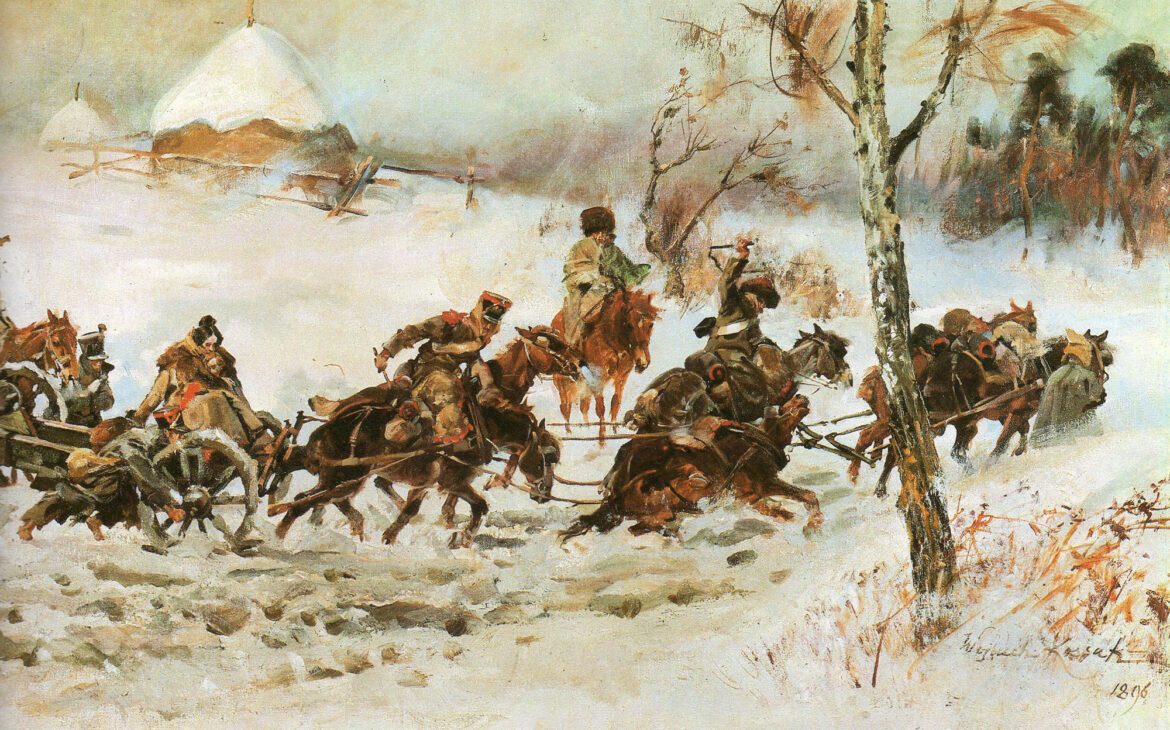Many of his paintings have been reproduced and published as postcards. Almost the entire Kossak family was artistically and literarily talented. Wojciech’s father Juliusz, a talented painter, was among the initiators of Krakow’s National Museum. Wojciech’s son Jerzy was also a talented painter, and both daughters, Maria Jasnorzewska-Pawlikowska and Magdalena Samozwaniec, were gifted in literature.
The Kossak family was wealthy. Born in Paris in 1858, Wojciech’s father Juliusz was regarded as a young and talented painter of hunting scenes, portraits of people and horses in mid-19th century Poland, which was not an independent country in Europe at that time.
In 1861 the Kossaks settled in Warsaw, but after the fall of the January Uprising, when the Russians began a violent Russification in the Kingdom of Poland, Juliusz decided to move to Krakow. There they settled in a manor house quickly dubbed the ‘Kossakówka’, which became a meeting place for Krakow’s artistic elite.
The young Wojciech studied in Munich and, at the same time, did his military service in the 1st Cavalry Regiment in his hometown. During his student years, his woodcut reproductions began to appear in the Warsaw weeklies. He also enriched his knowledge of painting during his studies in Paris. At the end of the 1870s, he began to paint pictures thematically connected with Polish history. In particular, the most frequently reproduced painting “Olszynka Grochowska”, depicting a battle from the period of the November Uprising, brought him great fame.
When, at the end of the 19th century, the fashion for large-scale panoramas became fashionable in Europe, Kossak was invited by Jan Styk to prepare such a painting. The artists decided to depict the Battle of Racławice from 1794 on it. The work was created in Lwów, in a rotunda specially prepared for this purpose. Kossak made four main sketches, painting two thirds of the panorama’s composition. The work was a success in 1894.
The painter gained even greater recognition when, on the initiative of another artist, Juliusz Fałat, he produced another panorama, “Crossing the Berezina River”. It was particularly popular in Berlin. His paintings were not only admired by the local elite, who paid exorbitant sums for his portraits, but also by Kaiser Wilhelm II, who commissioned a series of works on the Franco-Prussian campaign of 1814.
Between the wars his fame dimmed somewhat, although he was still the most popular Polish painter. He died in 1942 in Krakow.





